The animator is often seen as a God controlling all time and space in the animated film. Yet, in our shared world of human life, the animator is as helpless as everyone else, and must die. After a serious acute illness in 2015, I recalled The Slaughtermen’s respectful but ironic rock version of the traditional gospel song “God’s Not Dead”, recorded “live” in 1985.
“Well my God’s not dead
He’s still alive
God’s not dead
He’s still alive
God’s not dead
He’s still alive
I can feel him in my hands
Feel him in my feet
Feel him all over me”
This was an opportunity to revisit the tradition of the skeleton and the dance of death, and my own film Dance of Death (1983), but with me as the performer miming the voice, and with my own movements via rotoscope. I was cheap and available and “still alive”. The recording of “God’s Not Dead” reaches down across the years to control much of the film; the singing voice of Ian Stephen from 1985 controls my mouth, just as the music controls my movements. To this extent, at least my “God-like” powers as an animator are shared with the ghosts of musicians’ past.
Still Alive (2018) is structured as an allegorical presentation — an “embodyment” (sic) — of both human life and animation. The singer’s life begins as a primeval blob, which develops quickly via stick figures into a full-size drawn skeleton with the cheering cartoon audience from Dance of Death (see Figures 1 and 2).
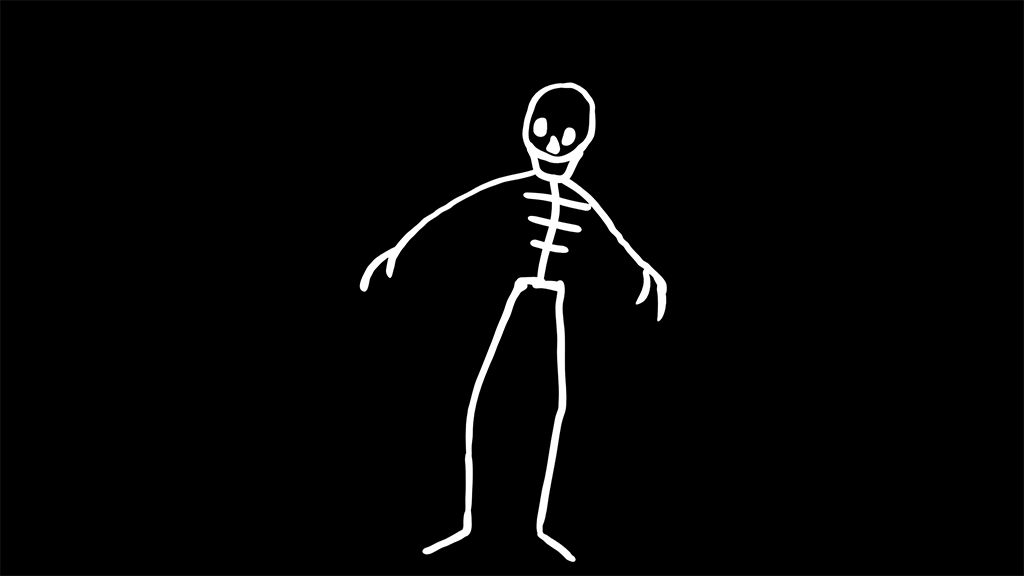
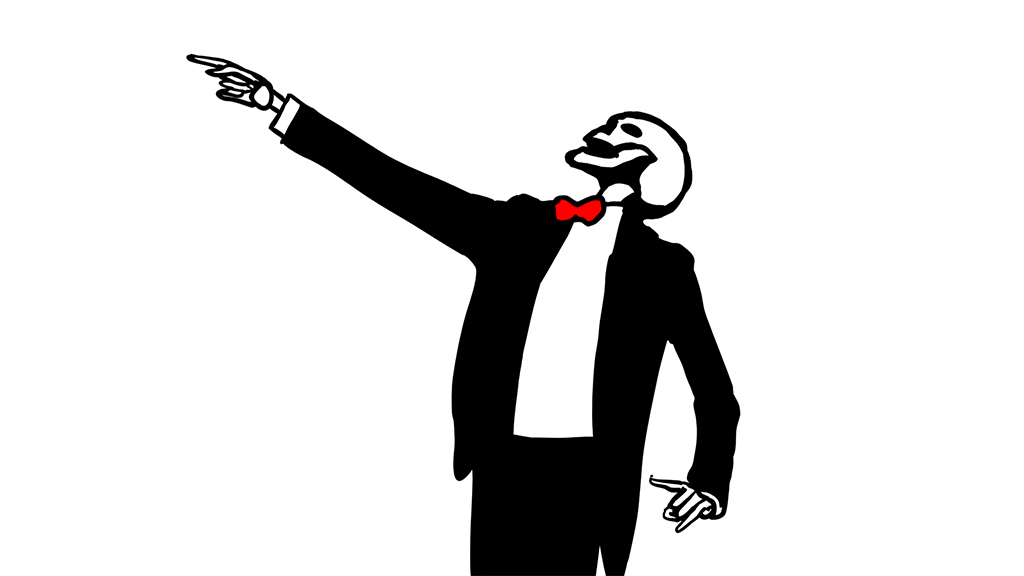
But then the music stops. The God of this little world intervenes; he is certainly not dead. The music pauses for a narrative interlude not included in the original song; the audience disappears. Retaining its anatomically accurate proportions, and still dressed in a tuxedo and bow tie, the skeleton reverts to the white chalk outline and blackboard darkness of the earliest cartoons (see Figure 3).
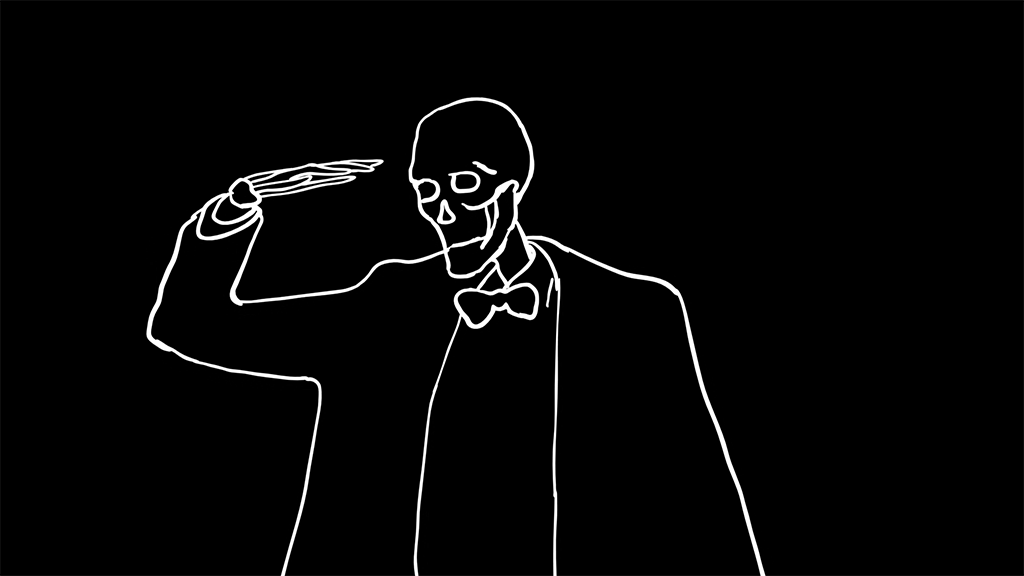
Hearing the distant sounds of trains and war, he can only peer into the infinite gloom. Soon, however, a door opens; a wedge of light illuminates the figure, and the rock music floods in. Now the door closes again; the skeleton is back in darkness. But now he is not alone; he follows the footfalls as they move around him in the darkness. An overhead light switches on above him, with a vast cheering crowd somewhere out there, outside the cone of light (see Figure 4).

Then the light switches off. Silence and darkness again. The footfalls move towards the door, which opens with the music as before. Its light reveals that the head of the figure is now a photograph of the much younger Dennis Tupicoff who made Dance of Death; now another photograph, and another. As a jerky series of stop-motion photographs I turn: “still alive” but growing older with each rotation. The unseen God is still there, “still alive”, still invisible and controlling everything: the door, the light, the crowd, the music, my body and face, my rapidly advancing age (see Figure 5).
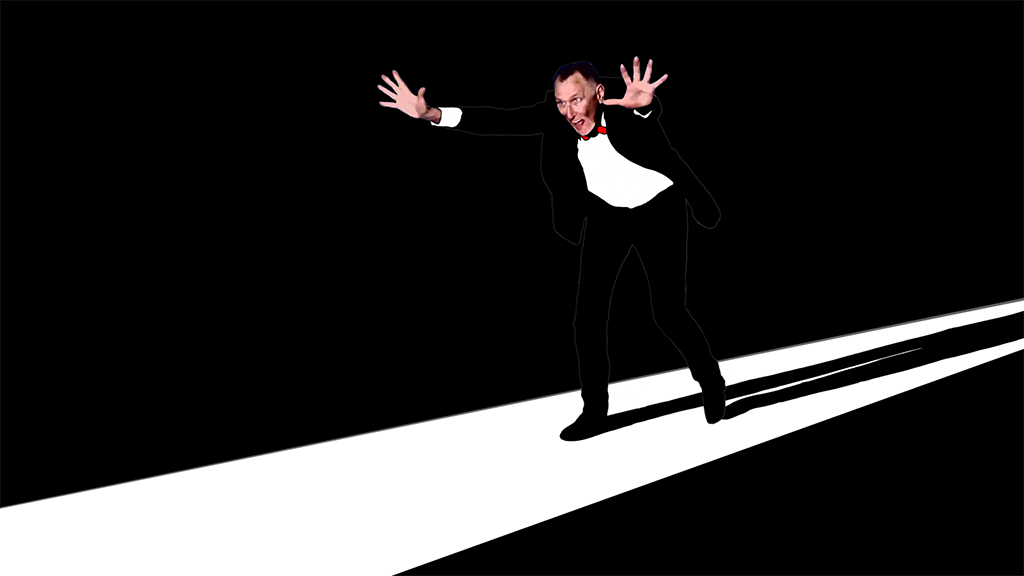
Now the door begins to close again; the Great Animator is about to leave me to a world of darkness and silence. Alarmed, I rush towards the door, bursting through at the last moment/frame. Now I am a drawing once more — no more photographs — and out in the light, but now as the older Dennis. As he chants “He’s still alive! He’s still alive!” the tuxedo drawing of Dennis gradually becomes simpler, more cartoon, though he is evidently unaware of his transformation by that unseen hand (see Figure 6).
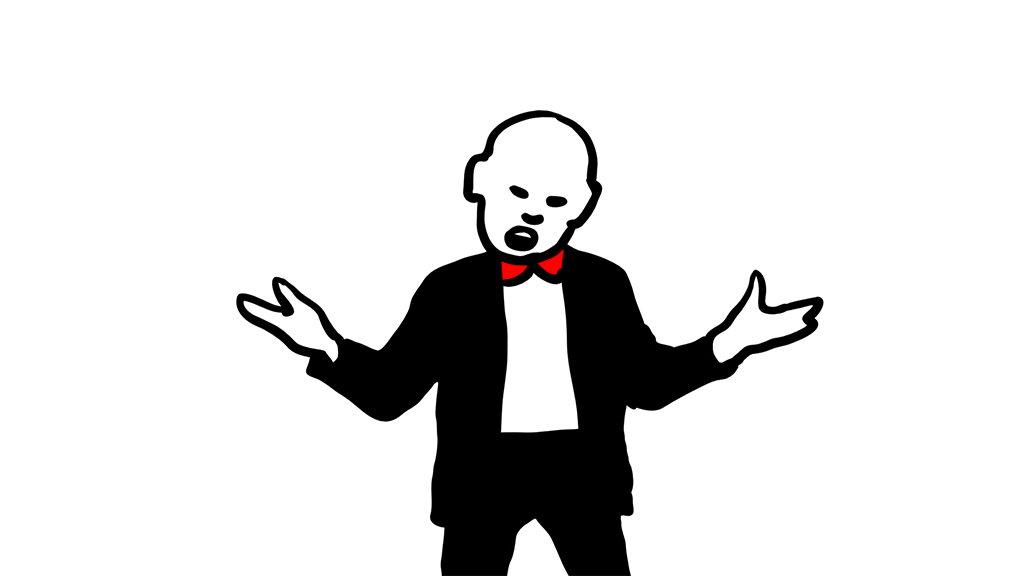
Still belting out the song, the figure changes rapidly into simpler forms of cartoon and lip sync. Finally, the singer is a stick figure who has lost both individual identity and the power of speech: its mouth is one line, shut tight. As the music winds down, the stick figure loses its rhythm, then staggers and falls to its knees. Soon it is reduced to a bouncing ball, the most basic of animated forms. It splats into the ground and is no more.
Starting as a chalk-line graffiti skeleton, the singer in Still Alive undergoes metamorphoses both gradual and sudden, perhaps at the hands of an invisible Someone/God. The presence of this antagonist — if it is an antagonist — is signaled by opening and closing doors, and the footfalls we hear in the darkness. This relationship is never explained, Photographic images are used only briefly as components in a sequence that remains rotoscoped as animation. The film never looks like live action; it has no incidental or contingent action, and no backgrounds. Yet most of the animation is based firmly on a recorded “live” performance, just as it uses a “live” recording by The Slaughtermen. The live-action material, spectrally present but invisible, acts as a framework or armature upon which the animated drawings can be made in various degrees of illustrative realism as required by the story. The live-action frames can also be ignored by the animator, when only simple drawings such as stick figures and bouncing balls are required. These are drawn freehand, as they might have been in 1900, and rapidly break free of the music. In all the worlds of animation, then and now, the animator remains the God of each one — and still alive.
Dennis Tupicoff has made many award-winning films as a writer, director, producer, and animator in fiction and documentary, animated and live-action, comedy and drama – and often inventive combinations. He has also been a full-time lecturer at the VCA School of Film and Television in Melbourne, and has taught and conducted workshops in Europe, North America, Asia, and Australia. His retrospectives have screened at festivals in Brisbane (2008, 2018), Kecskemet (2009, 2017), Krakow (2009), Poznan (2010), Seoul (2017), Gothenberg (2018), Melbourne (2018). Dennis is the author of Life in Death: My Animated Films 1976-2020 (CRC Press 2022).
